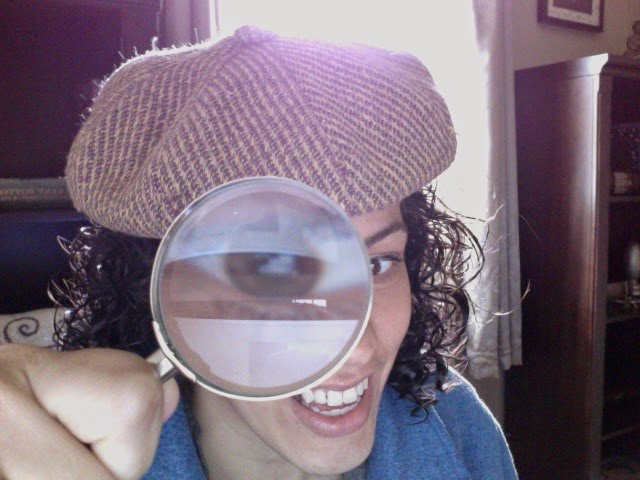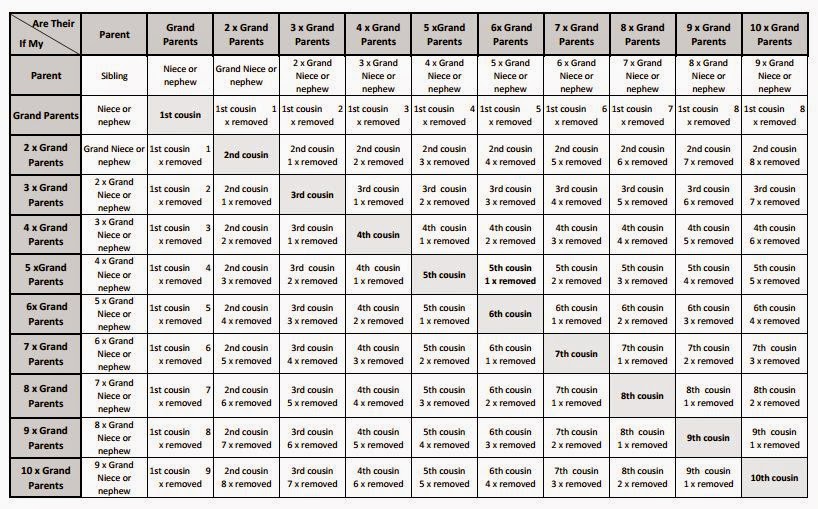IT'S ALL RELATIVE!
If you really stop to think about it, you are related to a lot of people. You may not think so, but it's true. Let's crunch some numbers and you'll see what I mean. Now, brace yourself, because it's about to get real up in here!
1. You have two biological parents.
2. Your parents had two biological parents each which makes four grandparents.
(Each generation back gets doubled since it takes two people to make one baby, right? Let's continue, shall we?)
3. You have 8 great-grandparents.
4. You have 16 great-great-grandparents (2x-great-grandparents).
5. You have 32 3x-great-grandparents.
6. You have 64 4x-great-grandparents.
7. You have 128 5x-great-grandparents.
8. You have 256 6x-great-grandparents.
9. You have 512 7x-great-grandparents.
10. You have 1,024 8x-great-grandparents.
11. You have 2,048 9x-great-grandparents.
12. You have 4,096 10x-great-grandparents.
13. You have 8,192 11x-great-grandparents.
14. You have 16,384 12x-great-grandparents.
(Are you starting to sweat yet? Trust me, this gets pretty amazing. Hang on...)
15. You have 32,768 13x-great-grandparents.
16. You have 65,536 14x-great-grandparents.
17. You have 131,072 15x-great-grandparents.
18. You have 262,144 16x-great-grandparents.
19. You have 524,288 17x-great-grandparents.
20. You have 1,048,576 18x-great-grandparents.
(I think we can stop here, but you get the general idea. Each time you travel back a generation, you have to double the amount of people who were responsible for you being on this Earth.)
I am not a "math-person"; never have been and never will be, but these are the kinds of figures that excite me. Put this into perspective for just a moment. I found a marriage record for a set of my 13x-great-grandparents. They were married in June 1566 A.D.! Just by doing a little bit of research, I learned that the world's population in 1500 A.D. was about 435 million! Do you understand the significance here? It's more than likely that you are related to just about everyone you know. Yes, it's true...somewhere down the generational line, you probably share relatives with everyone else. When you put it into these terms, the old adage, "What a small world!" really hits home.
I was serious when I said that I found a marriage record from 1566 for one set of my 13x-great-grandparents. Here is a picture of it:
Yes, indeed...it looks old, doesn't it? Well, it is old! It is written in Latin...thank goodness for Google Translate! Anyway, my 13x-great-grandfather's name was Mariano Blundo and my 13x-great-grandmother's name was Vicenza di Magnano. They were married in Sortino, Siracusa, Sicilia, Italia on 19 June 1566.
You may be asking yourself how I was able to obtain this record, or how I am even sure that these people are relatives of mine. The explanation is simple. Remember how I mentioned that you must start with the current generation and work your way backwards? That is what I did. This record was obtained using the website familysearch.org. I have been a subscriber to Ancestry.com for several years now, and I love it, but as a researcher, I cannot only use one reference. If you were asked to write a term paper in school using only one resource, you really wouldn't have different perspectives and you may be missing out on pertinent information that would enhance your final report.
While Ancestry.com allows you to browse through millions of records for a subscription fee, familysearch.org allows you the same opportunity and all you have to do is sign up with a valid email. I have obtained a lot of valuable information using Ancestry.com, but because familysearch.org also scanned Catholic Church records to their site, I was able to trace back to before the year 1866. The Catholic Church records allow you to take a glimpse into your ancestors' Baptisms, Holy Communions, Confirmations, Marriages, and deaths. I recommend familysearch.org to anyone who does not want to make a monthly commitment yet to Ancestry.com, but I HIGHLY recommend Ancestry.com to anyone who wants to "hunt and gather" information and keep all of their found records and documents in one place on the computer. Both are valuable resources. Ellisisland.org is another invaluable resource to anyone who had ancestors who were immigrants and were processed through Ellis Island. On this site, you can locate relatives, see their placement on the ship's manifest, learn about who they traveled with, how much money they had on them, what their physical appearance was, who they were meeting in America, any relative they may have had back in the homeland, AND you can see a picture of the ship that transported them to America.
Click on the links below to browse these excellent websites:
Since Sunday is a day of rest, I will see you all on Monday. Enjoy the weekend and happy hunting!






